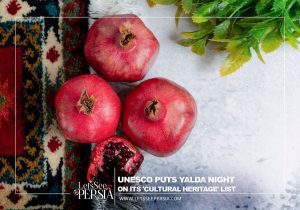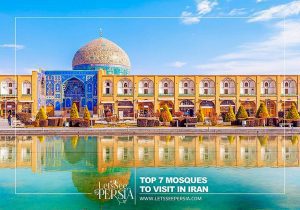Nowruz - Persian New Year
Nowruz is an Iran travel blog that introduces all Iranian traditions of the Persian New Year. Nowruz is a Persian New Year at the beginning of spring and is registered by UNESCO as an Intangible Cultural Heritage site. Here, you can find all the information about Nowruz and its ceremony. On Nowruz, we have two weeks of holiday, and most of the hotels and attractions are full, so please consider these two weeks as the high season of travel in Iran.

All Need to Know about Nowruz
- Iranian UNESCO Intangible World Heritage
- Iran Travel Blog
- Location: Iran
Tourist information about Nowruz
The “International Day of Nowruz” was proclaimed by UNESCO as an Intangible Cultural Heritage site.
Nowruz is made up of two Persian words. It is pronounced ” no-Rooz” Or “New Day.” Nowruz can be written in English in many ways, like Noroz, Norouz, Nowruz, and Norooz. It is the name of the celebrations many Persian and Central Asian people have to welcome the New Year. The New Year starts on the vernal equinox, usually on March 20 or 21.
This is when the season changes from winter to spring. The celebrations of Nowruz show how the Earth gets a fresh start when spring comes. Activities for Nowruz have a lot in common with other spring holidays, like Easter for Christians and Sham Al-Naseem, an ancient Egyptian holiday that dates back to the time of the Pharaohs.
History of Nowruz
Nowruz is a long-standing festival. It is a secular holiday that people of many different faiths celebrate. Because of this, it can be seen differently through the lens of religion. Nowruz comes from the religious tradition of Zoroastrianism. Zoroastrianism focuses on big ideas like how good and bad work together and how people are connected to nature, among other things.
Zoroastrian practices mostly ruled ancient Persia for a long time (centered in what is now Iran). There are still a few Zoroastrian groups in the world today. The biggest ones are in southern Iran and India. Nowruz is a holiday celebrated worldwide, starting in Iran and Central Asia. Nowruz became a popular holiday in the places where Persian culture was a big part of the culture.
Nowruz in Different Countries
Even though there is no longer a place called Persia, people in Afghanistan, Iran, Iraq, Tajikistan, Uzbekistan, Azerbaijan, India, Pakistan, Turkey, the United States, and Canada still celebrate Nowruz in a big way. Nowruz is a holiday celebrated by many different races, religions, and cultures. On the other hand, Nowruz is an important holiday for the Parsi people and is known as their spiritual New Year.
Interesting Traditions on Nowruz
On Nowruz, family and friends celebrate the end of one year and the start of the next. During Nowruz, kids get a 14-day break from school, and most adults don’t have to go to work. Family and friends gather at each other’s homes during the holidays to eat and talk. People traditionally clean their homes a few weeks before Nowruz to prepare for the New Year. It is also expected to buy new clothes for the family and unique furniture for the house at this time.
Chahar Shanbe Suri
In Persian, Chahar Shanbe Suri is a holiday held on the night of the last Wednesday of the old year. People in Suri traditionally gather on the night of Chahar Shanbe Suri, small light bonfires in the streets, and jump over them while praying. The flames stand for all the bad things that happened in the past year being burned away. Because jumping over a fire is dangerous, many people light the bonfire and shout the phrase without getting too close to the flames today.
Tahvil-e Sal (Time of New Year)
After Chahar Shanbe Suri’s events, families return to their homes and wait together for the spring equinox, which is called Tahvil in Persian. People can find out about the time of Tahvil by looking on the Internet or in the calendar. Families and friends gather when the New Year is just minutes away to wait for Tahvil.
Right after Nowruz, the family says things like “Happy New Year” or “Sale No Mobarak!” in Persian to each other. Next, the oldest person in the family gives everyone special candies and sweets, and small children get coins as gifts. Tradition also says that families and neighbors should visit each other and give each other gifts.
Haji Firooz
Before these ways of finding out about the New Year were available, though, a particular person named “Haji Firooz” would come to the neighborhood to sing, dance, and spread the word about Nowruz. Haji Firooz usually wears a red satin outfit and paints their face to hide who they are.
All About Haft-Sin: The Table of Seven S'
Making the haft-sin table is an essential part of the Nowruz holiday. In Persian, the number seven is called “haft,” and the letter S is called “sin.” The haft-seen table is a list of seven things that begin with the letter S. A family activity, making the haft-seen table starts with putting a special family cloth on the table. The seven S items are then placed on the table.
• Sumac (crushed spice berries): For the sunrise and the spice of life
• Senjed: For love and affection.
• Vinegar(Serke): For people who are sick and old.
• Seeb (apples): For your health and beauty
• Sir (garlic): For good health
• Samanu (wheat pudding): For birth and life’s sweetness
• Sabzeh (wheat grass that has sprouted): For the rebirth and renewal of nature
A book of poetry by the famous poet Hafez is another essential thing to put on the haft-sin table. During the 14th century, Hafez lived in Persian lands and wrote many poems and prose stories. Many Persians think of Hafez as their national poet, and his importance in history is comparable to that of Shakespeare in the English-speaking world.
Special Foods for Nowruz
Depending on the country of origin, many special foods are made for Nowruz, just like they are for other cultural events. On the first day of Nowruz, people often eat Ash-e Reshte, a noodle soup. People believe that untangling the noodles will bring good luck because they represent the many things that can happen in a person’s life. Another dish for Nowruz is Sabzi Polo Mahi (fish served with special rice mixed with green herbs). Many green herbs and spices are used to make the rice, symbolizing how green nature is in the spring. During Nowruz, people also eat unique sweets.
Sizdeh Bedar - The Last Day of Nowruz
After Nowruz starts, the haft-sin table stays in the family home for thirteen days. The name of the thirteenth day is Sizdeh Bedar, which means “getting rid of the thirteenth” in Persian. On Sizdeh Bedar, people have just as much fun as they do on the first day of Nowruz. Families pack a special picnic for this day and go to the park to eat, sing, and dance with other families. Bringing sabzeh and sprouts grown just for this event is traditional. At the park, the green blades of the sabzeh are thrown on the ground or into a nearby river or lake to show that the plant is being returned to nature. Sizdeh Bedar is the last day of the Nowruz celebrations.
Walt Disney celebrates the Persian New Year
Mickey Mouse, one of the biggest cartoon characters in the history of television and cinema, has millions of audiences around the world. In a two-minute video, this famous cartoon character introduced the world’s most beautiful Eid. This popular cartoon character also introduced the best of Wednesday to Thirteen Badr so that the world would become more familiar with the Iranian New Year. This is the first time a big company like Disney has tried to introduce Nowruz to children around the world.
Mickey Mouse is one of the most famous cartoon characters in the world created by Walt Disney, the founder of Disney in Hollywood, and Ob Ayex.


If you would like to know more about the Nowruz ceremony or if you are traveling during Nowruz and would like to experience Iranian culture, please get in touch with our tour operators.
- info@letsseepersia.com
- Click Here to Read More Iran Travel Blog



